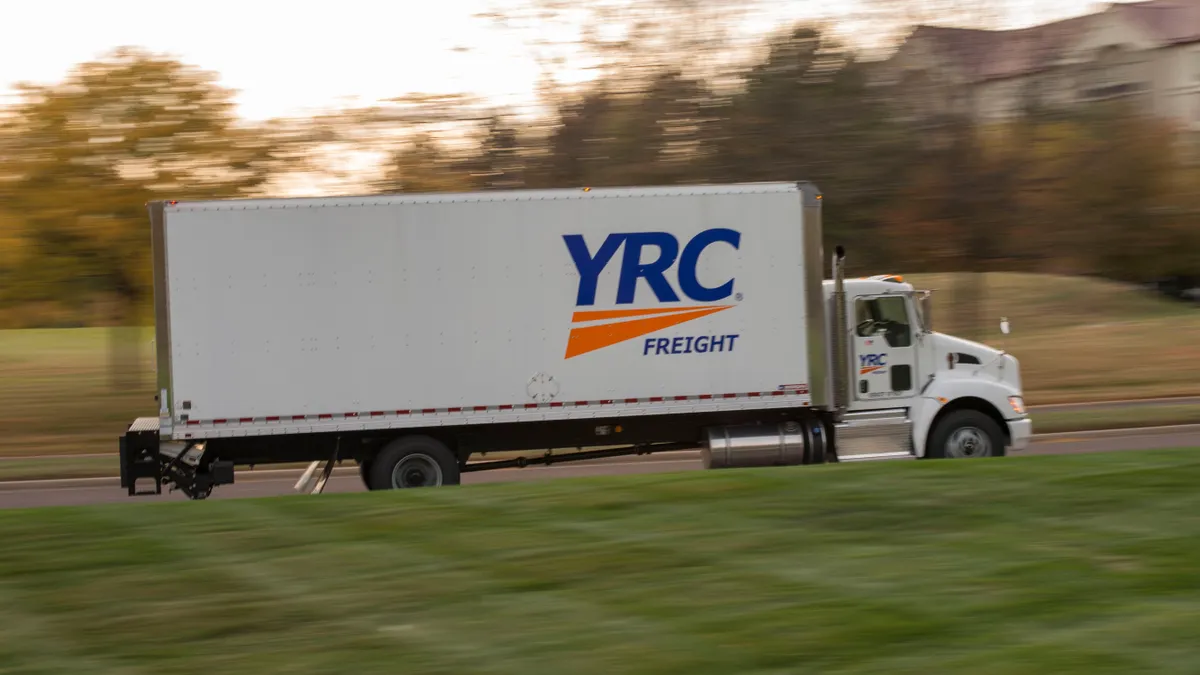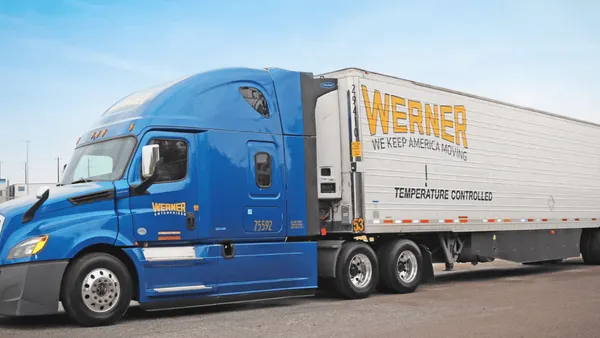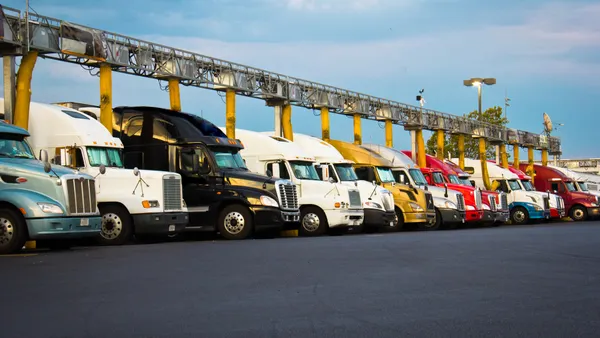Dive Brief:
- The load-to-truck ratio from DAT fell month-over-month across truck modes in October as spot posts decreased by nearly 6% compared to September, and truck posts increased by almost 10% compared to September.
- As more trucks entered the spot market to meet demand, the load-to-truck ratio was still higher on a YoY basis for van (up 156% YoY), reefer (up 155% YoY) and flatbeds (up 243% YoY).
- As the number of loads for each truck increases, the market price for that truck is also getting more expensive. Van, reefer and flatbed spot rates were all up on a YoY basis in October.
Dive Insight:
Demand for trucking freight is being driven by strong consumer spending and a manufacturing industry that's seen growth for five consecutive months. Fleets have been open about their capacity issues.
"Trucking capacity is very tight," YRC Worldwide — which recently changed its name to Yellow — CEO Darren Hawkins said on an earnings call last week. "Housing, construction and demand is strong, imports are at record levels, and what we’re seeing on the West Coast, I haven’t seen in my entire career as far as the demand environment."
The Supply-Demand Balance Freight Index from ACT Research shows the industry at its tightest level in the index's history, which goes back to 2011.
"Class 8 retail sales have improved recently, suggesting equipment capacity will gradually start to grow over the next few quarters, but the ongoing driver market capacity constraints argue for tightness to continue in the near-term," ACT Research’s Vice President and Senior Analyst Tim Denoyer said in a recent blog post. "After the holiday season, we would expect some rebalancing as parked trucks are redeployed and extended unemployment benefits expire."
Retailers are driving a lot of the demand as companies work to restock low inventories ahead of the holiday shopping season, which has an effect on van volume. But flatbed, which saw an uptick, is still below its 2018 peak as the industrial and energy sectors have yet to recover to their pre-pandemic output, according to Avery Vise, vice president of trucking at FTR.
Shippers could see their freight costs go up — if they haven't already — as they wait for new capacity to enter the market.
"We would anticipate continuing to see positive momentum in those contract negotiations," Hawkins said on the call in response to an analyst question on contract renewal increases.
The latest expenditure figures in the Cass Freight Index showed total freight spend was up 1.2% YoY — the highest point since June 2019.
Vise said FTR expects spot and contract rates to be "up strongly in 2021," though contract rate increases are not yet matching the upticks seen in the spot market.
"We don't see many novel tactics for shippers here," he said in an email. "Higher rates in exchange for capacity commitments and efforts to improve the velocity of turnarounds at docks are always key."
As carriers look forward to 2021, they have their sights set on adding capacity with hopes of the market continuing to provide the demand to fill it.
"We believe the domestic economy and customer demand will continue to improve," Old Dominion Freight CEO Greg Gantt said at the end of last month. "So, we must ensure that we have the necessary elements of capacity to support our anticipated growth."
Some of this capacity is already starting to arrive, but not from legacy carriers.
"One thing we are seeing is an enormous increase in the number of new small carriers," Vise said. "This means that brokers and third-party logistics firms might be in a somewhat better position to handle shipper's needs than they might have been just a few months ago."














